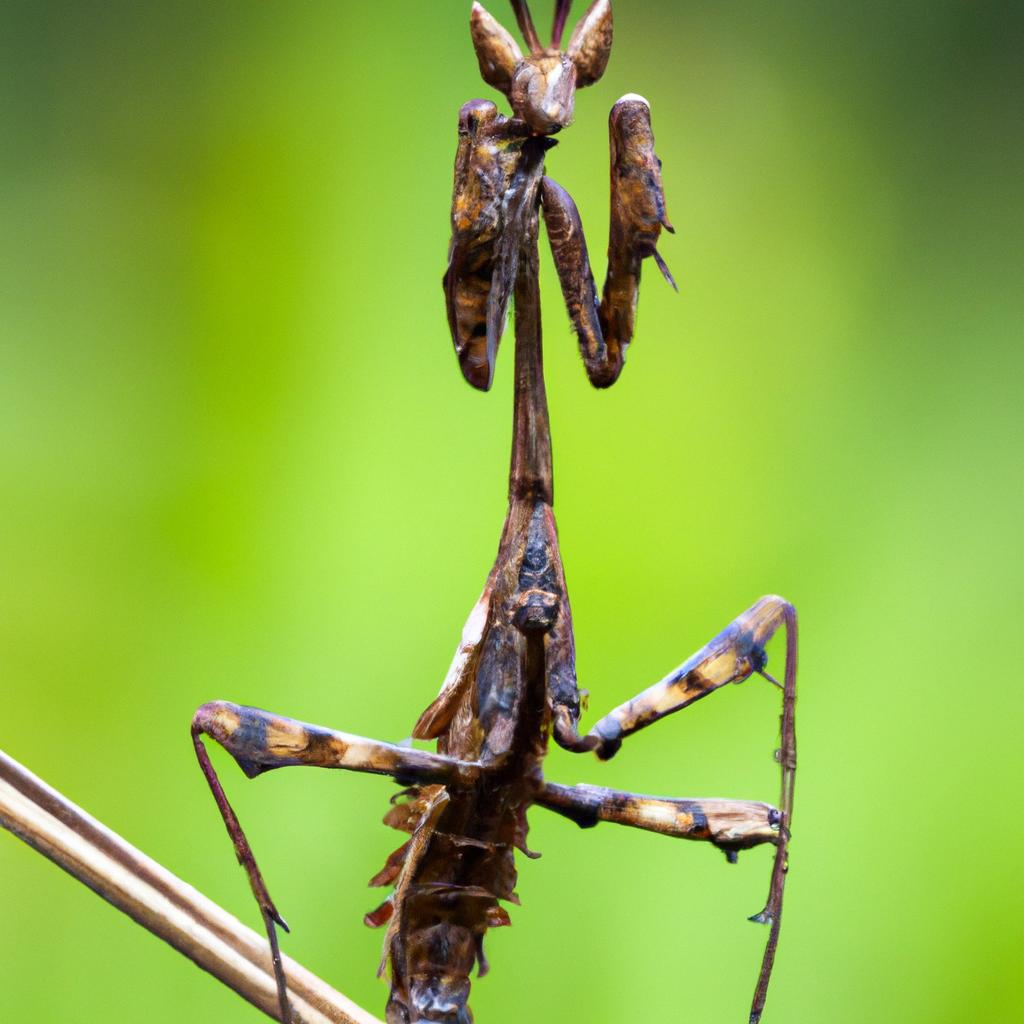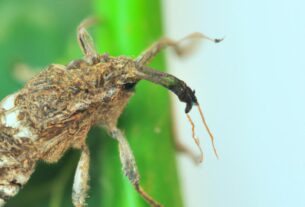Mantis, that enigmatic insect, has captured the imagination of nature enthusiasts worldwide. With their elongated bodies and formidable forelegs, these creatures possess a distinct allure. Renowned for their extraordinary appearance, impressive hunting prowess, and captivating behavior, mantises never fail to fascinate. Amid the vast array of mantis species, a select few stand out for their outlandishness and singularity. Join us as we delve into the realm of the world’s most absurd mantis species, guaranteed to leave you astounded.
The Giant Malaysian Shield Mantis
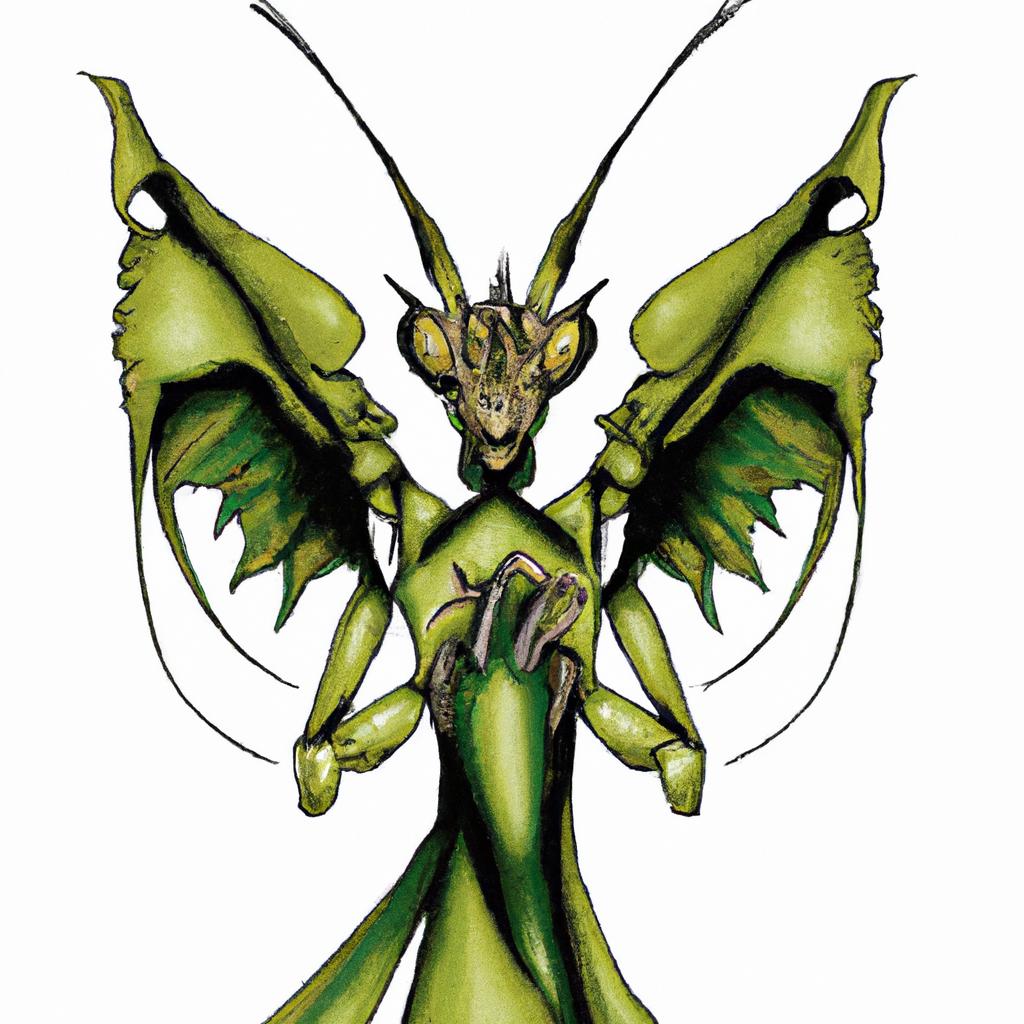
The Giant Malaysian Shield Mantis (Rhombodera megaera) takes the crown as one of the largest mantis species on Earth. This remarkable mantis sports a shield-shaped body, accounting for its distinctive appearance. Adult males can grow up to a remarkable length of 10 centimeters, while the females reach an even more impressive size of 12 centimeters. The Giant Malaysian Shield Mantis is also notable for its vibrant coloration, with a luminous green body adorned with striking red stripes on its wings and legs.
This species hails from Southeast Asia and inhabits countries such as Malaysia, Thailand, Indonesia, and the Philippines. Its preferred residence is the lush rainforests, where it demonstrates its predatory prowess. Possessing an aggressive hunting behavior, the Giant Malaysian Shield Mantis fearlessly tackles prey much larger than itself. This formidable predator’s diet consists of a variety of insects, including crickets, grasshoppers, and even other mantis species.
Among its many intriguing attributes, the Giant Malaysian Shield Mantis boasts a remarkable defense mechanism. When threatened, it raises its forelegs and unfurls its wings, revealing striking red stripes. This dramatic display is believed to intimidate predators. The Giant Malaysian Shield Mantis is indeed a captivating insect, captivating us with its unique appearance, impressive hunting skills, and peculiar defense strategies.
The Devil’s Flower Mantis
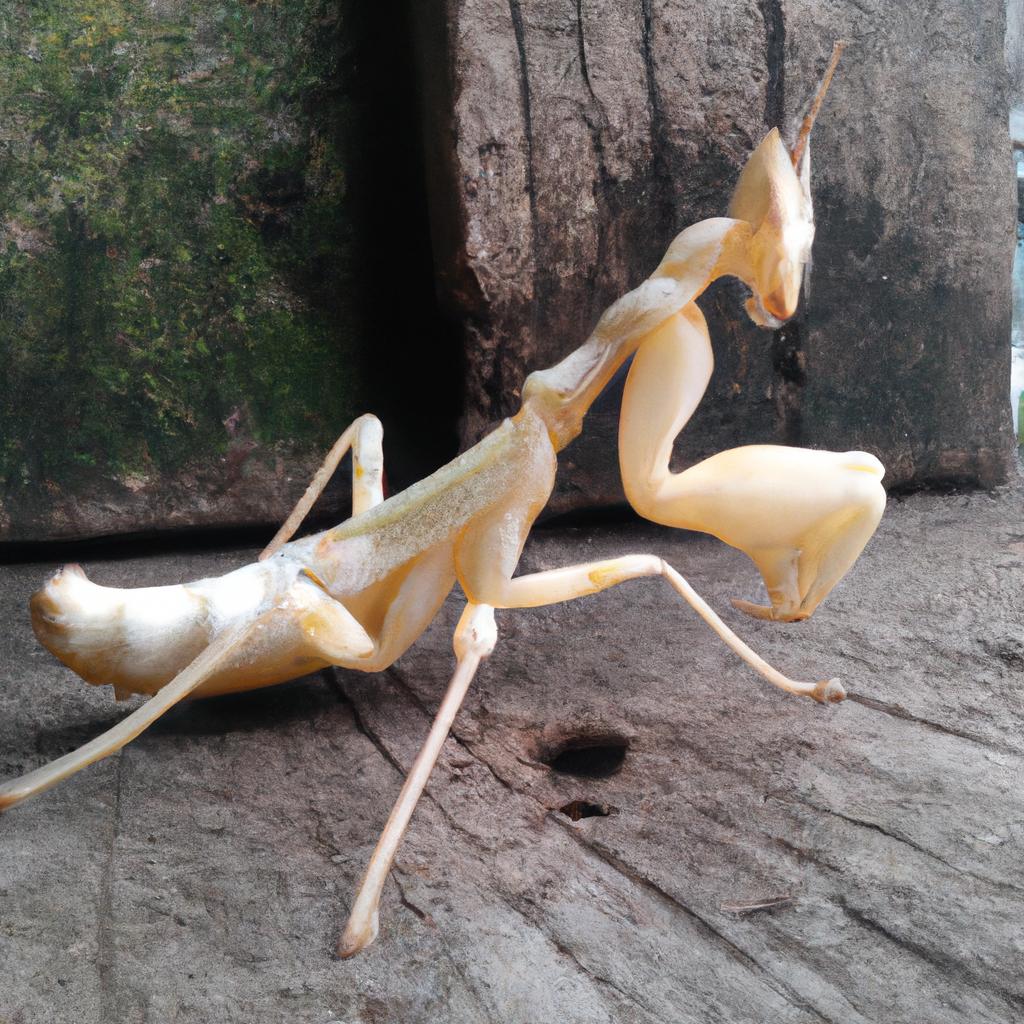
The Devil’s Flower Mantis (Idolomantis diabolica) is a mantis species renowned for its striking appearance and aggressive disposition. This mantis species is indigenous to Africa and thrives in countries like Tanzania, Kenya, and Uganda. Aptly dubbed the “Diabolical Mantis,” the Devil’s Flower Mantis showcases a ravenous hunting behavior.
Featuring a medium-sized frame of up to 7 centimeters, the Devil’s Flower Mantis sports an appearance that resembles a floral bloom. Its bright green body, coupled with pink or purple wings reminiscent of flower petals, creates an enchanting visage. This camouflage aids the mantis in blending seamlessly with its surroundings and launching ambushes on unsuspecting prey.
Ambush is indeed the modus operandi of the Devil’s Flower Mantis, which awaits prey within striking range before pouncing. Its diet encompasses a range of insects, including crickets, grasshoppers, and moths. Furthermore, the Devil’s Flower Mantis presents an enthralling reproductive behavior. Female mantises of this species are notorious for cannibalism, occasionally devouring the male after mating. However, male Devil’s Flower Mantises have developed a survival strategy, often offering a small gift of food to the female as a courtship gesture. This cunning maneuver bolsters their chances of survival. The Devil’s Flower Mantis undoubtedly offers a captivating glimpse into the unique behaviors and habits of mantis species.
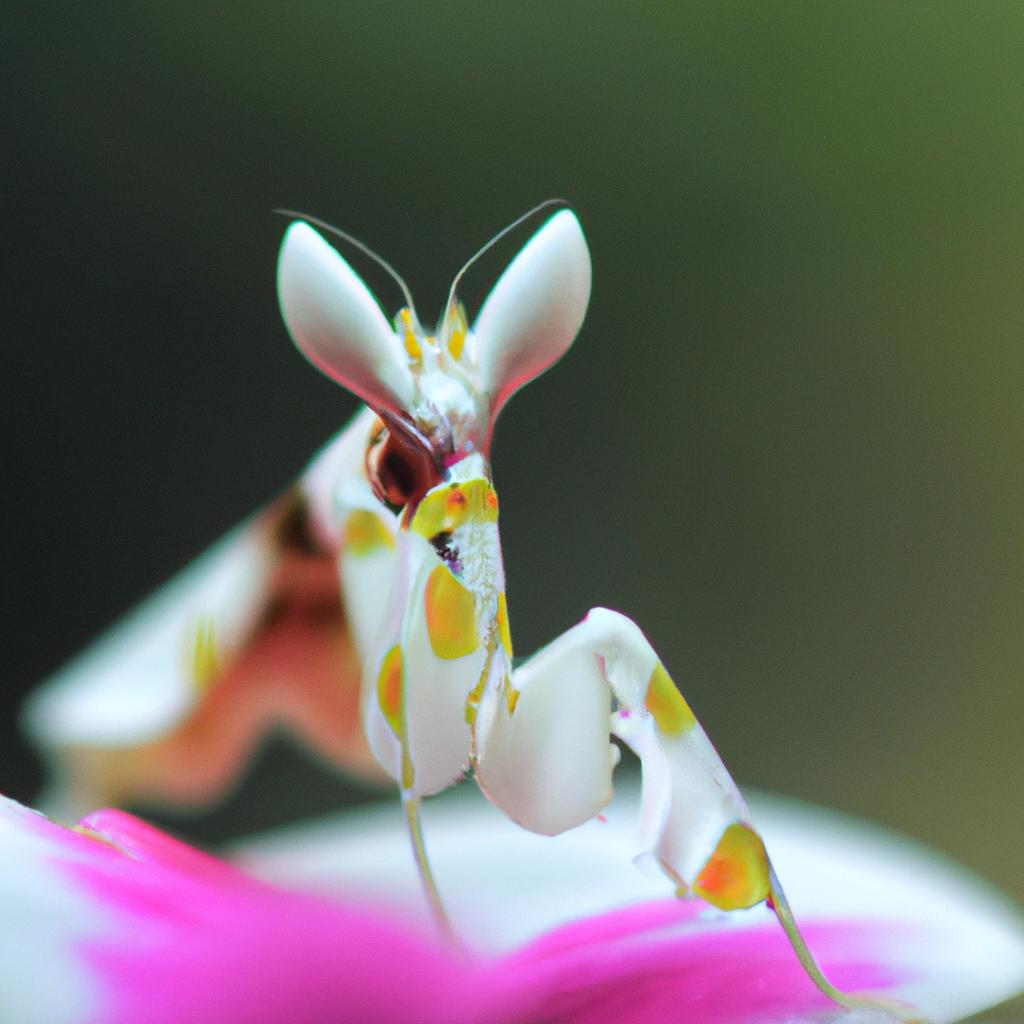
The Orchid Mantis
The Orchid Mantis (Hymenopus coronatus) is a mantis species celebrated for its remarkable appearance and impressive hunting abilities. Native to Southeast Asia, it thrives in countries like Malaysia, Indonesia, and Thailand. Often referred to as the “Orchid Praying Mantis,” this species masterfully mimics the appearance of an orchid flower.
With a modest size of up to 7 centimeters, the Orchid Mantis showcases a unique appearance that enables it to blend seamlessly with its namesake flowers. Its vivid pink or white body, coupled with petal-like extensions on its legs and wings, remarkably resembles an orchid in full bloom. This captivating camouflage aids the mantis in luring prey and executing ambushes with precision.
Impressive hunting skills define the Orchid Mantis. Operating as an ambush predator, it waits patiently for prey to venture within striking range before launching its attack. Butterflies, moths, and bees comprise its diverse diet.
Found primarily in tropical rainforests abundant with orchids, this mantis species has adapted seamlessly to its environment. Whether in the wild or in gardens and parks where orchids bloom, the Orchid Mantis captivates us with its extraordinary ability to blend in and thrive.
The Spiny Flower Mantis
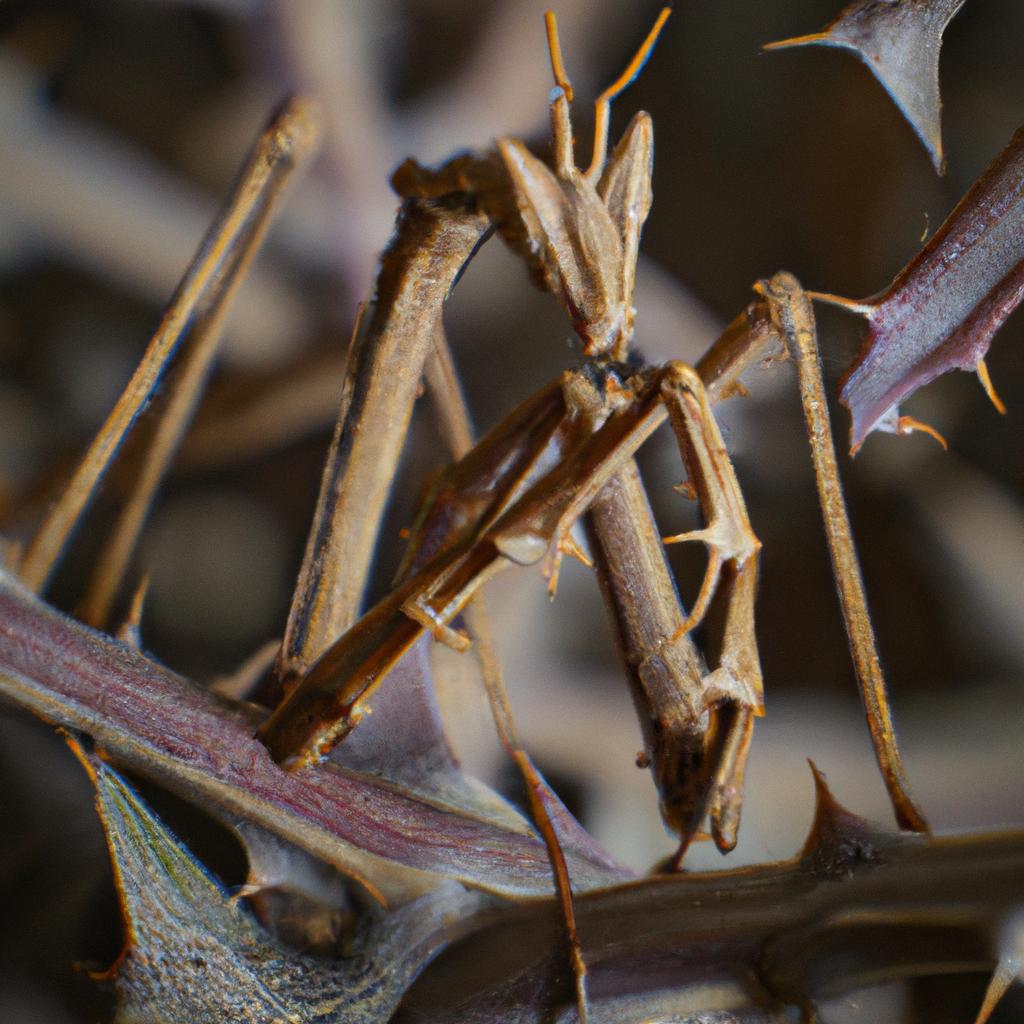
The Spiny Flower Mantis (Pseudocreobotra wahlbergii) possesses an unmistakable appearance and formidable hunting skills. Originating from Africa, this mantis species flourishes in countries such as South Africa, Zimbabwe, and Mozambique.
The miniaturized Spiny Flower Mantis measures a mere 4 centimeters in length. Resembling a flower in its entirety, this mantis species emerges with a vibrant green body, accompanied by spiny extensions on its legs reminiscent of thorns on a flower stem. Its unique appearance serves the mantis well, enabling flawless camouflage for executing surprise attacks.
Operating as an ambush predator, the Spiny Flower Mantis patiently awaits its prey, striking with precision when the time is right. Flies, crickets, and grasshoppers form a substantial portion of its varied diet.
Regrettably, the survival of the Spiny Flower Mantis faces threats. Deforestation and urbanization-induced habitat loss pose significant challenges to its existence. Furthermore, the demand for this captivating mantis species in the pet trade further exacerbates its dwindling population. The Spiny Flower Mantis presents a riveting spectacle, showcasing the distinctive behaviors and habits of mantis species while underscoring the imperative to preserve their natural habitats.
In conclusion, mantis species serve as living testaments to the marvels of adaptation within the natural world. The world’s most absurd mantis species, such as the Giant Malaysian Shield Mantis, the Devil’s Flower Mantis, the Ghost Mantis, the Orchid Mantis, and the Spiny Flower Mantis, captivate us with their otherworldly appearances, impressive hunting prowess, and unique behaviors. Sadly, these remarkable creatures face mounting threats, including habitat loss, pollution, and the perils of the pet trade. As avid nature enthusiasts, it falls upon us to champion the preservation of these creatures’ habitats and protect their populations. At TooLacks, we remain committed to sharing the latest news and insights on nature, gardening, and animals, including the enthralling world of mantises. Join us in our quest to raise awareness and inspire action toward safeguarding our planet’s awe-inspiring biodiversity. Visit TooLacks to embark on a journey of discovery and appreciation for the wonders of nature.
